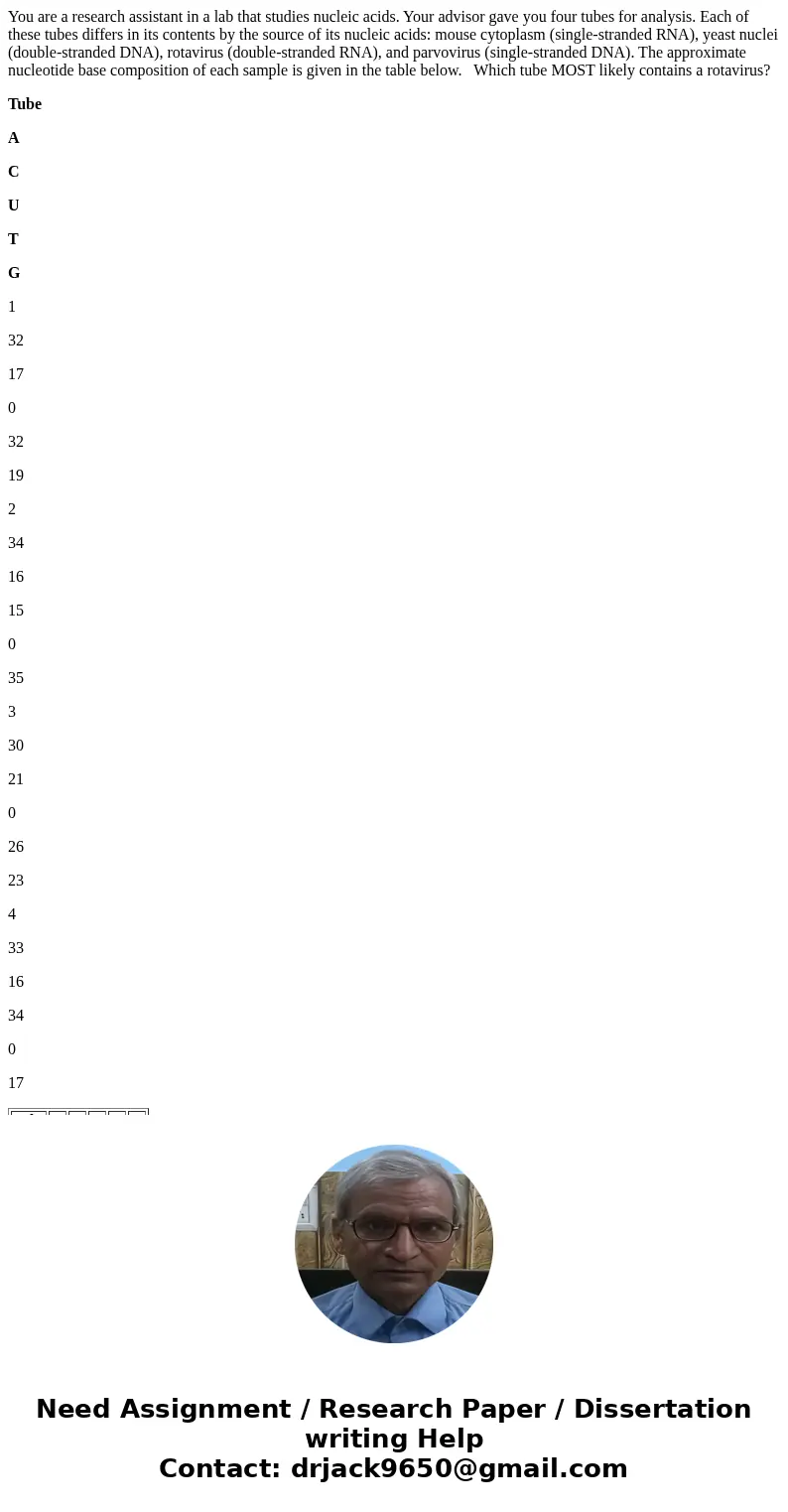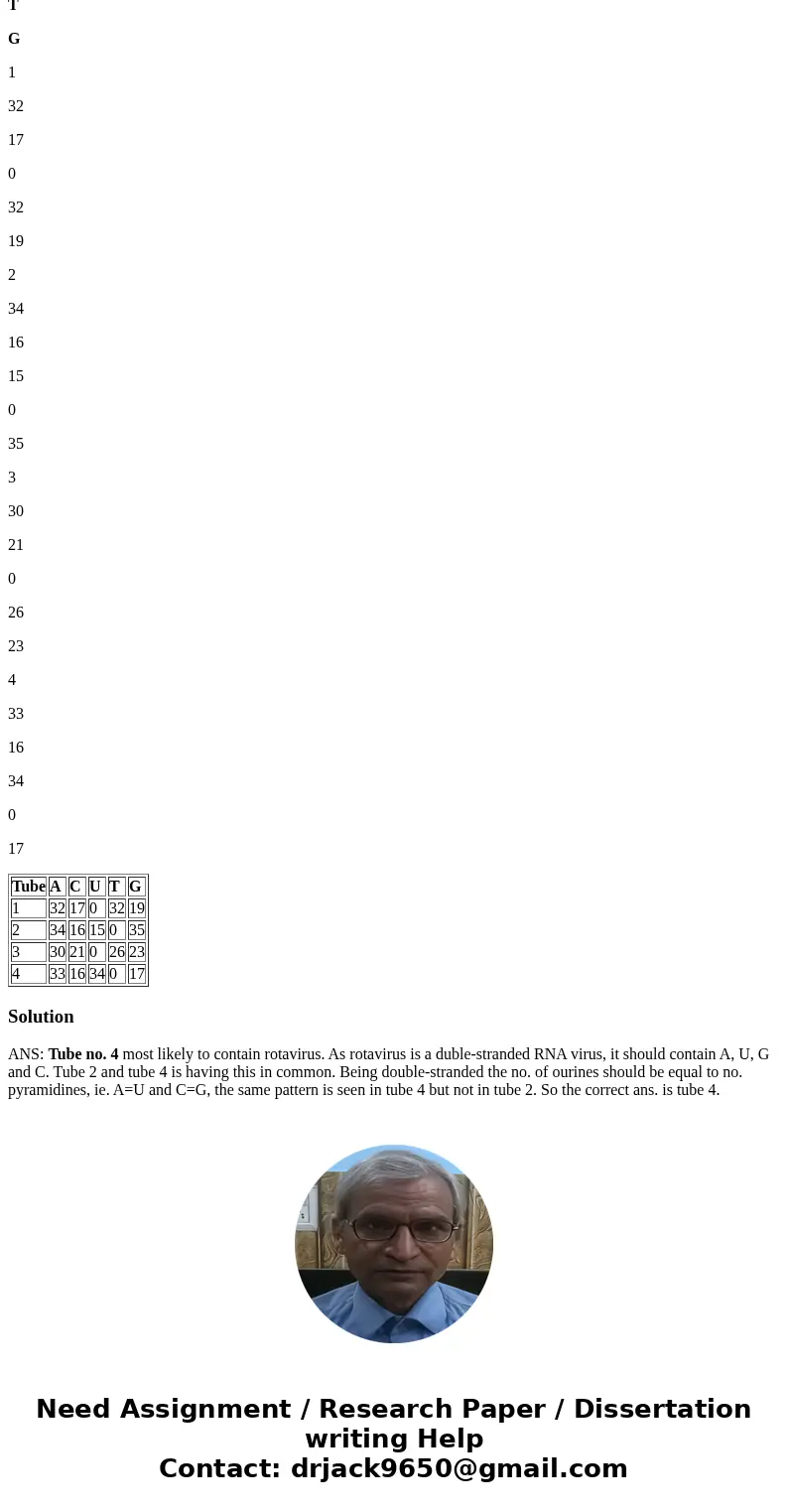You are a research assistant in a lab that studies nucleic a
You are a research assistant in a lab that studies nucleic acids. Your advisor gave you four tubes for analysis. Each of these tubes differs in its contents by the source of its nucleic acids: mouse cytoplasm (single-stranded RNA), yeast nuclei (double-stranded DNA), rotavirus (double-stranded RNA), and parvovirus (single-stranded DNA). The approximate nucleotide base composition of each sample is given in the table below. Which tube MOST likely contains a rotavirus?
Tube
A
C
U
T
G
1
32
17
0
32
19
2
34
16
15
0
35
3
30
21
0
26
23
4
33
16
34
0
17
| Tube | A | C | U | T | G |
| 1 | 32 | 17 | 0 | 32 | 19 |
| 2 | 34 | 16 | 15 | 0 | 35 |
| 3 | 30 | 21 | 0 | 26 | 23 |
| 4 | 33 | 16 | 34 | 0 | 17 |
Solution
ANS: Tube no. 4 most likely to contain rotavirus. As rotavirus is a duble-stranded RNA virus, it should contain A, U, G and C. Tube 2 and tube 4 is having this in common. Being double-stranded the no. of ourines should be equal to no. pyramidines, ie. A=U and C=G, the same pattern is seen in tube 4 but not in tube 2. So the correct ans. is tube 4.


 Homework Sourse
Homework Sourse